Materiality
At Tata Steel, we make concerted efforts to prioritise the concerns of our key stakeholders. We use the Materiality Assessment approach to engage with all our stakeholder groups, in order to understand their key issues and focus areas.
Prioritising issues key to value creation
We have conducted periodic materiality exercise since FY2012-13, covering key areas, such as economy, environment, community, supply chain, governance, people, human rights, amongst others, and have used the outcome to align our business strategy, strategic objectives and long-term plans. These material topics have helped us identify Environmental, Social and Governance (ESG) risks and opportunities for the Company.
We have refreshed our Materiality Assessment in FY2022-23 and undertaken the assessment on a consolidated basis, through a structured external stakeholder consultation process, undertaken by an independent agency and aligned with international best practices.
We have followed the approach of double materiality in our Materiality Assessment, as below:
Impact Materiality
- Considers impacts on people and the environment
- Determined by the scale, scope and irremediable character
Financial Materiality
- Considers the effects on the financials of the organisation
- Determined by risks and opportunities
Tata Steel’s Materiality Assessment
has been conducted in accordance with
the guidance provided by key standard
setting bodies, including Global
Reporting Initiative (GRI), Sustainability
Accounting Standards Board (SASB)
and the Integrated Reporting
The first step in the Materiality Assessment was identification of key stakeholders. As per the AA1000 Stakeholder Engagement Standard, the Company have engaged with the following stakeholders:
- Senior Management
- Investors (debt and equity)
- Employees
- Contractual Workforce
- Community
- Suppliers
- Customers
- Media
- Regulatory Bodies
- Industry Bodies
- Non-government organisations
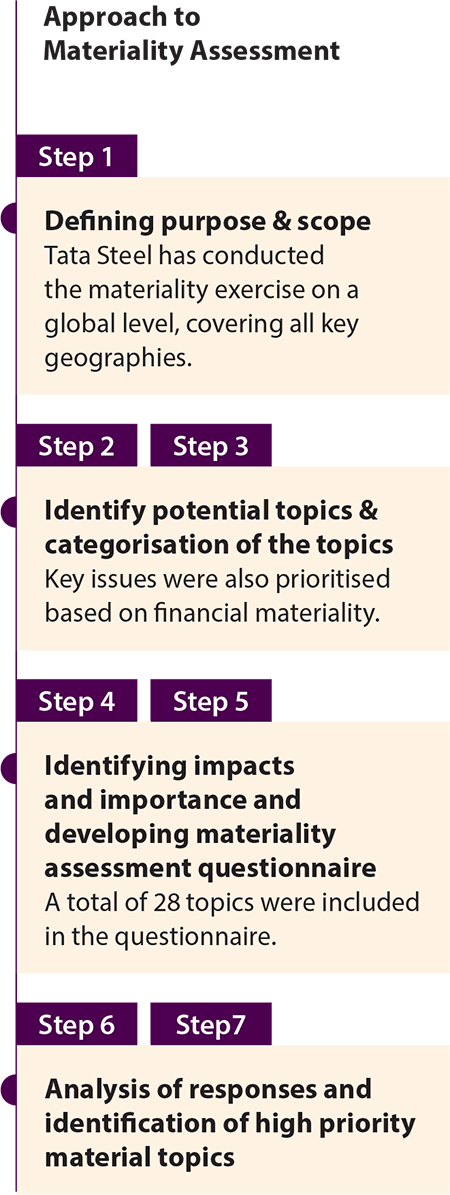
High priority materiality issues (FY2022-23)
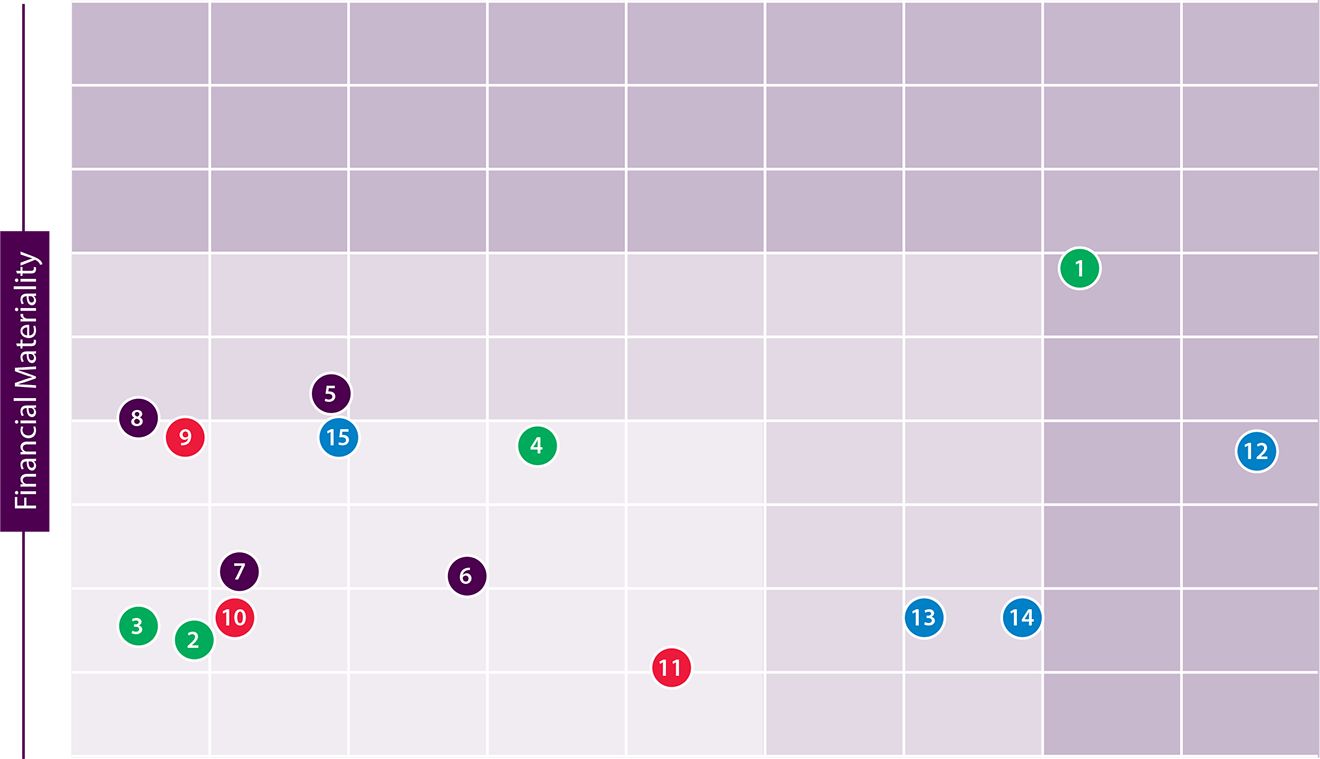

Based on the independent analysis, the following high priority Material Issues have been identified from the set of material topic listed for Tata Steel on a consolidated basis:
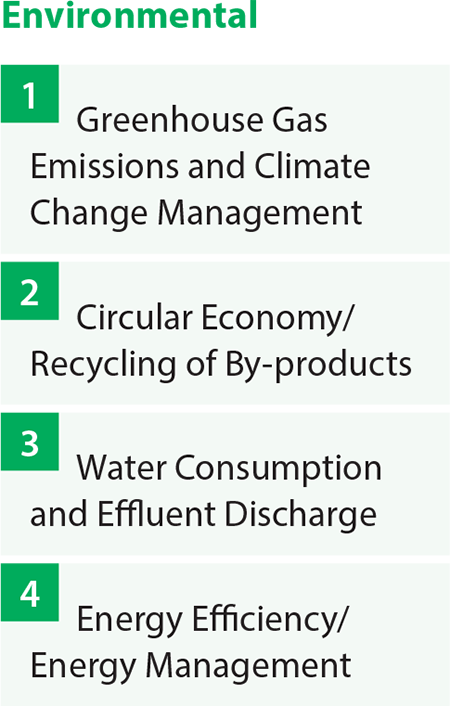
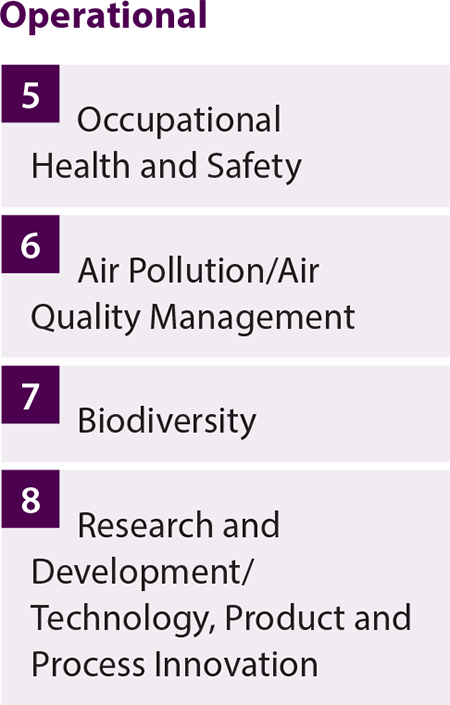
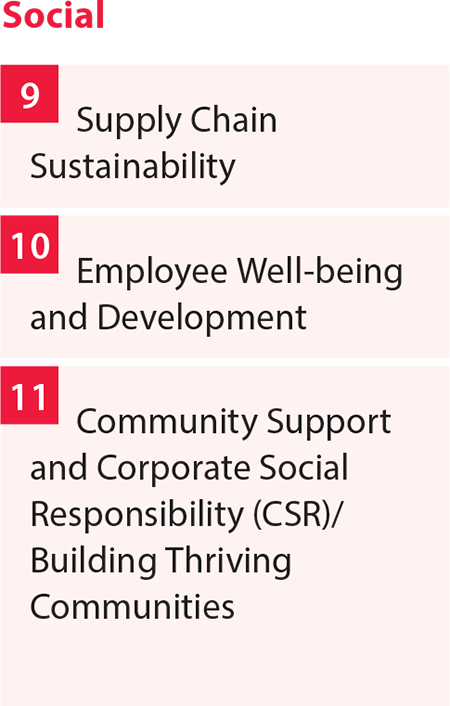
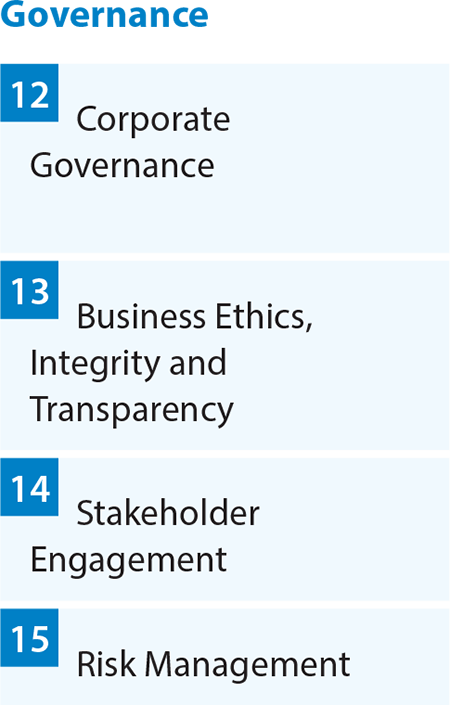
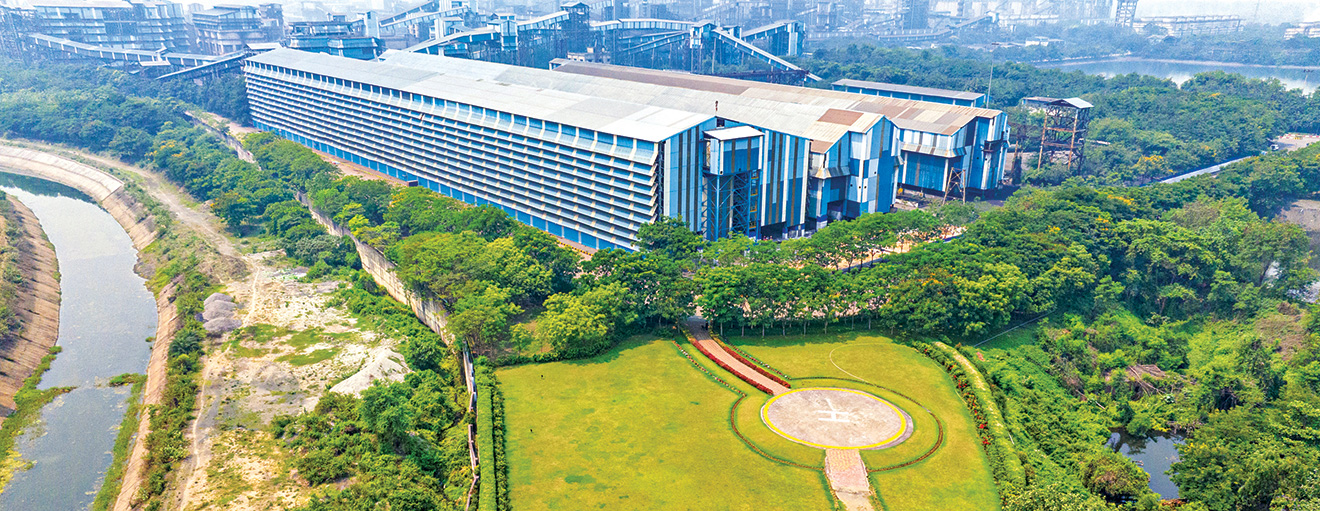
Tata Steel Meramandali
1
Greenhouse Gas Emissions & Climate Change Management
Approach
Tata Steel has set an ambitious target to achieve net zero emissions by 2045. Tata Steel has published its strategy to mitigate Climate Change related risks in its Climate Change Report as a part of Tata Steel’s Integrated Report for FY2022-23.
KPIs
Greenhouse Gas Emissions – Scope 1, Scope 2 and Scope 3, Emission intensity per tonne of crude steel
Capital linkage
SDG linkage
2
Circular Economy/
Recycling of By-products
Approach
Tata Steel is looking at two
approaches for value creation from
waste and by-products:
a. Maximise the usage of scrap in
steelmaking
b. Maximise revenue from sale of
by-products.
KPIs
Total steel scrap recycled (internal and external), total solid waste generated, total solid waste utilised
Capital linkage
SDG linkage
3
Water Consumption and
Effluent Discharge
Approach
We are taking a holistic approach to water management by minimising water requirement and simultaneously reusing effluent water after treatment by setting up effluent treatment plants. Tata Steel is also reusing treated municipal wastewater and has water harvesting infrastructure across multiple locations.
KPIs
Total fresh water consumption, Total effluent discharge volume
Capital linkage
SDG linkage
4
Energy Efficiency/Energy
Management
Approach
Tata Steel is committed to energy conservation and energy efficiency in all areas of operation using best available technologies to enhance energy efficiency and by deploying renewable energy projects.
KPIs
Total energy consumption, specific energy consumption, renewable energy consumptions
Capital linkage
SDG linkage
5
Occupational Health and
Safety
Approach
Tata Steel’s safety and health responsibilities are driven by our commitment to zero harm to the people we work with, and the community at large.
KPIs
Lost-time Injury, Lost-time Injury Frequency Rate, Fatalities
Capital linkage
SDG linkage
6
Air Pollution/Air Quality
Management
Approach
We are committed to identifying, assessing and managing our air emissions to ensure healthy air quality, by investing in upgradation of pollution control equipment, installation of ‘De-NOx’ facilities, installation of new dust extraction.
KPIs
Stack SOx emission, stack NOx emission, stack dust emission
Capital linkage
SDG linkage
7
Biodiversity
Approach
Tata Steel aims at integrating biodiversity into our business ecosystem by committing to conserve, enhance and restore biodiversity in all of our operations and across the supply chain. We aspire to achieve No Net Loss of Biodiversity.
KPIs
Total sites covered under Biodiversity Management Plans (BMP), Total area covered under BMP
Capital linkage
SDG linkage
8
Research and Development/ Technology, Product and Process Innovation
Approach
Tata Steel aspires to be among the top 5 global technology leaders in the steel industry and has consistently used technology and innovation to build a rich portfolio of future ready products and is actively engaged in the development and pilot of various low carbon steelmaking technologies.
KPIs
Total collaborations/memberships of academia and technical institutes, Total number of patents filed & granted, Total number of new products developed
Capital linkage
SDG linkage
9
Supply Chain
Sustainability
Approach
Tata Steel has formulated Responsible Supply Chain Policy to address sustainability in supply chain and regularly assesses its supply chain partners on the Policy and organises training and awareness sessions.
KPIs
Scope 3 emissions, Active supplier base, Local suppliers – no. & volume, Affirmative Action suppliers – no. & volume, Supplier assessments, supplier awareness and training
Capital linkage
SDG linkage
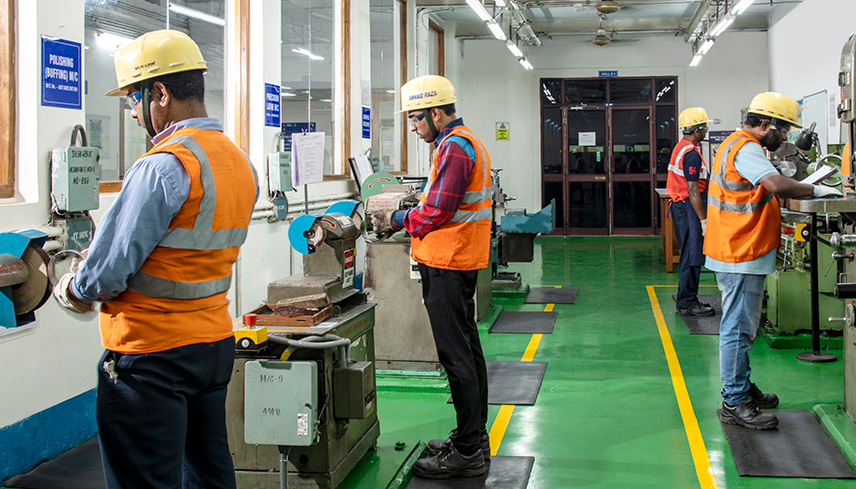
Automation Centre, Tata Steel Jamshedpur
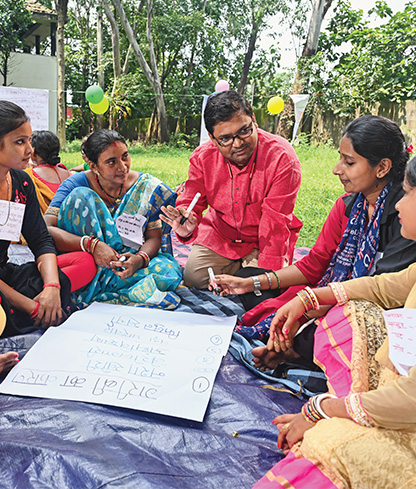
10
Employee Well-being and
Development
Sustainability
Approach
Tata Steel recognises that people are its primary source of competitiveness and designs management practices to enrich the quality of life of its employees, develop their potential and maximise their productivity. Additional details of Tata Steel’s employee well-being initiatives are provided in the Company’s Business Responsibility and Sustainability Report.
KPIs
No. of employees, employee productivity, employee training, workforce covered through formal trade unions, employee gender ratio, employee diversity mix
Capital linkage
SDG linkage
11
Community Support and Corporate Social Responsibility (CSR)/Building Thriving Communities
Approach
Tata Steel firmly believes in the health and welfare of its people, the community and society are intrinsic to its approach to business.
Tata Steel engages in open and transparent dialogue with members of the community to understand their concerns and tries to address them through various initiatives. Further details of Tata Steel’s Corporate Social Responsibility (CSR) activities and community engagement is provided in the Company’s Business Responsibility and Sustainability Report.
KPIs
Lives reached through CSR, CSR spend and various CSR initiatives of the Company
Capital linkage
SDG linkage
12
Corporate Governance
Approach
Tata Steel has laid a strong corporate governance foundation which is led by an active, well informed and independent Board and supported by Board committees. This is well supported by the Company's Ethical governance Framework and the Enterprise Risk Management practices of the Company.
KPIs
Board/committee governance, Disclosures & Reporting, Ethics & Compliance, Risk management, Succession planning & executive compensation
Capital linkage
SDG linkage
13
Business Ethics, Integrity, and Transparency
Approach
Tata Steel strives for global leadership in standards of ethics, based on the strong foundation of Tata Values and the Tata Code of Conduct (TCoC) and its principles underpinned by a formalised Management of Business Ethics Framework and commitment to transparency.
KPIs
Whistle-blower cases closed, Sexual harassment cases closed, Deployment of Anti-bribery and Anti-corruption policy, trainings on TCoC for Employees and Supply chain partners
Capital linkage
SDG linkage
14
Stakeholder Engagement
Tata Steel's Approach
At Tata Steel, we seek to balance the needs, interests and expectations of all stakeholders with those of the business through an integrated and inclusive process.
Tata Steel also undertakes regular Materiality Assessment to understand key issues for various stakeholder groups and incorporates them in its wider strategy.
KPIs
Stakeholder grievance management forums, stakeholder grievances addressed during the year
Capital linkage
SDG linkage
15
Risk Management
Approach
Tata Steel has put in place a welldefined Enterprise Risk Management framework based on international standards like Committee of Sponsoring Organisation ('COSO') of the Treadway Commission and ISO 31000.
KPIs
Identification, monitoring measurement, and mitigation plans for key risks
Capital linkage
SDG linkage
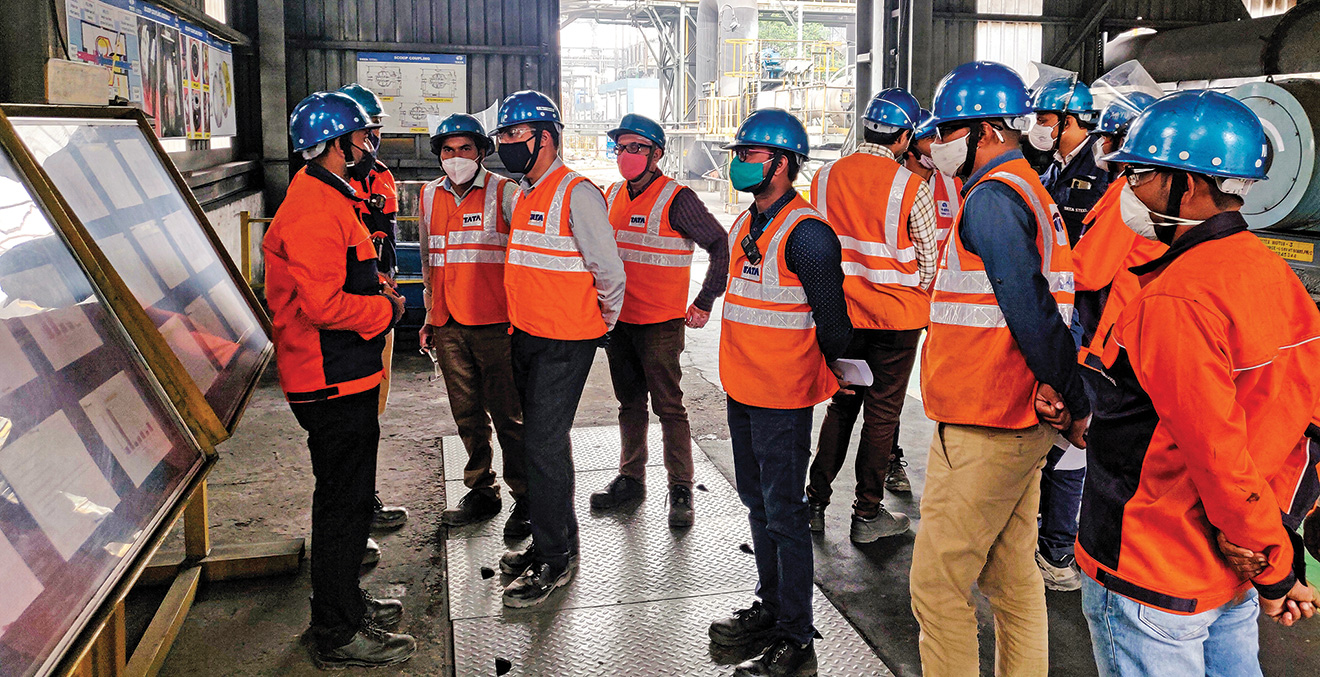
Committed to Safety
Capitals





